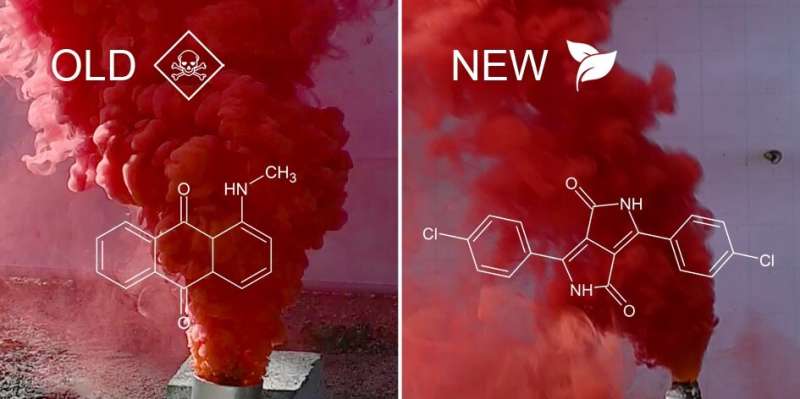A 'greener' alternative for red-colored smoke

The red smoke of a flare on a roadway warns motorists to be cautious, but the anthraquinone dyes currently used to produce this smoke are thought to be harmful to human health. Now, researchers reporting in ACS Sustainable Chemistry & Engineering have identified a less toxic, "greener" alternative—an organic dye called pigment red 254 (PR254). It also forms a red-colored smoke cloud more effectively than current dyes, the researchers say.
Commercialized in 1986, diketopyrrolopyrrole (DPP) dyes are used as colorants in car paints (such as the famous "Ferrari red"), optics technologies and other applications. For the purpose of signal smokes, Vojtech Pelikan and colleagues chose the DPP dye PR254, which has a brilliant red color and is less toxic than anthraquinone dyes.
In experiments, the researchers showed that a PR254-containing pyrotechnic composition reached a yield of red-colored smoke of 51%, compared with only 48% for the usual anthraquinone dye. PR254 was also more thermally stable than the reference dye, which might allow it to be used in a less toxic heat-generating system, according to the researchers.
More information: Ondrej Zeman et al, Diketopyrrolopyrrole─A Greener Alternative for Pyrotechnic Smoke Compositions, ACS Sustainable Chemistry & Engineering (2022). DOI: 10.1021/acssuschemeng.2c01000
Provided by American Chemical Society





















